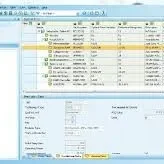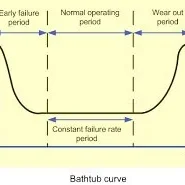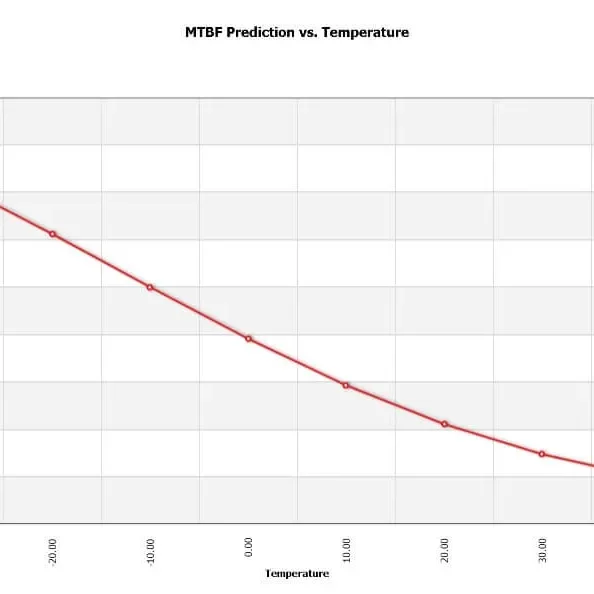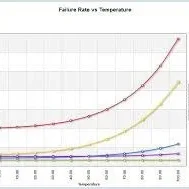MTBF Prediction & Calculation

Mean time between failure (MTBF) testing predictions has many applications including substantiating a design requirement, identifying reliability drivers, making competitive product evaluations, selecting warranty periods, advertising and marketing. Relteck can help you calculate your MTBF.
MIL-HDBK-217F, Telcordia SR-332, Mechanical (NSWC), NPRD95 and 217 Plus are the most popular MTBF prediction standards. Commercial Bellcore TR-332 or the Commercial Telcordia SR-332 are both available for use. A variety of end user environment are provided by each standard to allow tailoring of failure rate data to your product’s market. Prediction using MIL-HDBK-217 or Telcordia® SR332 provides a front-end look at mean time between failure. The model can predict MTBF using as little as the part type and count information. As the design progresses it can be updated to include thermal and piece part circuit stress analysis information. MIL-HDBK-217 is useful for both military and commercial electronics. Telcordia prediction models address commercial electronics only. It has the ability to consider the results of burn-in test, assembly and top assembly test, acceptance test, and field performance data. Hence, it can calculate pre-production, production and operational MTBF.
ANSI/VITA 51.1-2008 MTBF Prediction and Calculation– American National Standard for Reliability Prediction MIL-HDBK-217 Subsidiary Specification Because MIL-HDBK-217FN2 has not been updated recently, there are many new developments in electronics that are not accounted for, so reliability engineers must make changes to the methodology to make failure rate predictions more realistic. In particular, MIL-HDBK-217FN2 is known to have a pessimistic model for commercial quality parts, with a PiQ factor of 10 being applied to many part categories. The VITA 51.1-2008 MTBF prediction & Calculation standard provides rules for adjusting the PiQ values on COTS components.
MTBF analysis, or Mean Time Between Failures analysis, is crucial in assessing the reliability and performance of a system. By calculating the average time elapsed between one failure and the next, organizations can gain valuable insights into the expected operational lifespan of their equipment. This analysis allows for proactive maintenance planning, reducing downtime, and optimizing resource allocation.
The Importance of MTBF Calculation
Understanding the MTBF helps identify weak points in a system, allowing for targeted improvements to enhance overall reliability. It also aids in decision-making regarding warranty periods, spare parts inventory, and long-term cost projections. Additionally, MTBF analysis plays a vital role in risk management by highlighting potential failure patterns and enabling informed decisions about product design and production processes.
Overall, an MTBF report provides valuable data for improving operational efficiency, reducing costs associated with unplanned downtime, and enhancing customer satisfaction through increased system reliability. It's an indispensable tool for businesses aiming to maintain high-quality, dependable products and services.
Read on to learn more about us and what our MTBF prediction services can do for your business.
At Relteck, we are proud to offer MTBF prediction and calculation solutions that you can depend on. No matter what stage of development your product is in, we can help improve the overall performance and reliability so that you can offer your customers the most effective products possible.
How You Can Benefit From MTBF Calculations
With our MTBF prediction, you can more accurately determine how well your product will survive during early development, which allows you to make adjustments for better performance. Our team will take care of the MTBF calculation and analysis, and we will provide you with a comprehensive report that is easy to understand.
Take the guesswork out of product development and turn to the experts for MTBF calculation services. Get in touch with our experienced and helpful team when you call us at (310) 881-2775. You can also use our convenient contact form to request more information.
MTBF Prediction :: Parts Count Analysis
Parts count analysis is a simple and efficient means to calculating system level reliability by using reliability ratings for each component in the system, or sub-system. It is typically conducted early in the design phase to gauge the reliability of the product before prototypes are made.
MTBF Prediction :: Parts Stress Analysis
Parts stress analysis is conducted at a later stage of development and usually provides a lower, and more accurate MTBF figure. Unlike the parts count method, parts stress takes into account a great deal more information about each component, such as:
Product Environment
Electrical Stress
Component Quality Factor
Temperature Factor
First Year Reliability Estimates
Product Electronics Derating :: Parts Stress Analysis
Parts stress analysis derating is the practice of limiting electrical, thermal and mechanical stresses on parts to level below their specific rating. Derating criteria are necessarily part-and usage/environment specific during new product development.
Derating electrical part stress analysis criteria must be define during new product development using the following customer provided material and information:
Bill of Material (BOM)
Product Electrical Schematic
Definitions
In order to properly understand MTBF, it’s important to remember these key definitions
MTBF - or Mean Time Between Failures is calculated in hrs and is a prediction of a product reliability.
MTBF = 1/λ (failure rate)
MTTF - or Mean Time To Failure may be substituted in some data sheets for units that will not be repaired
Reliability - is further defined as the probability that given a certain failure rate, a certain number of units will pass (or fail) within a specified period.
Failure Rate - Failure rate is the rate of product failures expressed as a function of time. λ = 1/MTBF
Now that all terms have been defined properly, the relationship between failure rates, predicted reliability and MTBF can be summed up with the exponential formula R (t) = e^ - (t/MTBF) where e = 2.718
The equation is used in this typical MTBF example:
Question
What is the predicted reliability for a unit that has a useful life of 5 years and an MTBF rating of 500,000 HRS?
Answer:
R = 2.718 ^- (8760*5/500,000) =.916 or 91.6% of the units will still be failure free.
8.4 % will have failed.





